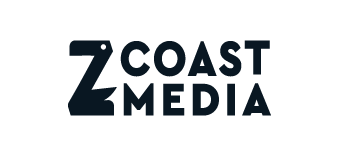Have you ever visited a website, thought to yourself “nope,” and left immediately? That’s called bouncing and if you say you haven’t done it you’re a liar. Everybody’s done it.
If you manage an online business, you’ll soon discover that bounce rate is one of the most important metrics for you to keep up with and constantly work to improve.
Too busy with all the other aspects of running your online business to deal with things like improving the bounce rate of your website? Don’t sweat it. We can work on improving bounce rate for you.

The Definition of Bounce Rate
Bounce Rate as defined by Google Analytics is:
“The percentage of single-page visits (i.e. visits in which the person left your site from the entrance page). Bounce Rate is a measure of visit quality and a high Bounce Rate generally indicates that site entrance (landing) pages aren’t relevant to your visitors.”
A visitor can also bounce from your site by
- Clicking on a link to a page on a different website
- Clicking the back button to leave your website
- Closing an open window or tab site
- Typing a new URL
- Session timeout
It’s important to understand your bounce rate because Google takes it into account when determining how to rank your site. But it signals some other things as well.

Why Does Bounce Rate Matter?
In addition to having a leading role in how your site is ranked in search engines, bounce rate also signals how you can expect your online business to do in sales each month. If a lot of people visit your website and bounce before they get to your product pages, the less online sales you’re going to make.
Ouch.
It doesn’t matter what kind of online business you’re running. You never want to scare visitors off with confusing copy or ancient web design. Everybody knows that.
However, there are more factors that affect bounce rate than the design of your site and the copy on its pages.

How To Make A Website Unbounceable
Unbouncable is totally a word for the purpose of this post. Just go with it.
First things first, make sure you’re aware of everything that can affect bounce rate on your website:
- Purpose of the page
- Type of audience
- Links to external sites
- Landing page design
- Landing page message
- Page load time
- Pop-up ads
- Search engine ranking of page (pages that rank highly for irrelevant keywords have high bounce rates)
After taking all of that into account, you can then take some extra steps to improve the amount of the time people are spending on your website.
- Above all else, the trick is to make sure you’re providing interest and relevant content to your audience.
For example, if your online business is all about camping gear, make sure you’re describing the benefits of your products specifically to the people you want to appeal to: campers, hikers, outdoor enthusiasts, etc. Use your blog to provide camping tips, how-tos, and best of lists that shoppers will find useful when browsing for new gear and planning trips.
Always keep what your audience wants in mind when putting any and all copy on your website and landing pages. - Even though we said it isn’t everything, design still counts for something. If your web design is easy on the eyes and relevant to the theme of your product line, visitors are more likely to stick around and engage.
You should make it a priority to design a clear navigation path/menu system. The less clicks visitors have to make to get where they want to go, the less likely they are to bounce. We’re lazy creatures when you get down to it.
Pro tip: It’s also a good idea to put a structure in place so that any external links you have on your site or in your blog posts open in a new window. - Utilize call-to-action buttons. Calls-to-action or CTAs help guide people through your website and shows them what to do next. CTAs make it easy for people to take the action they hopefully came to your site with intentions of in the first place.
Your CTA should always have a clear directive and be easy to click on. No surprises. In our opinion, the less pop-ups, the better.
What have you learned from analyzing your bounce rate? What tactics, tricks, or tips have you used and witnessed success with? Share your experience in the comments!





I am extremely inspired together with your writing talents as well as with the structure in your blog. Is this a paid subject matter or did you customize it your self? Either way keep up the excellent quality writing, it is uncommon to peer a great weblog like this one nowadays..